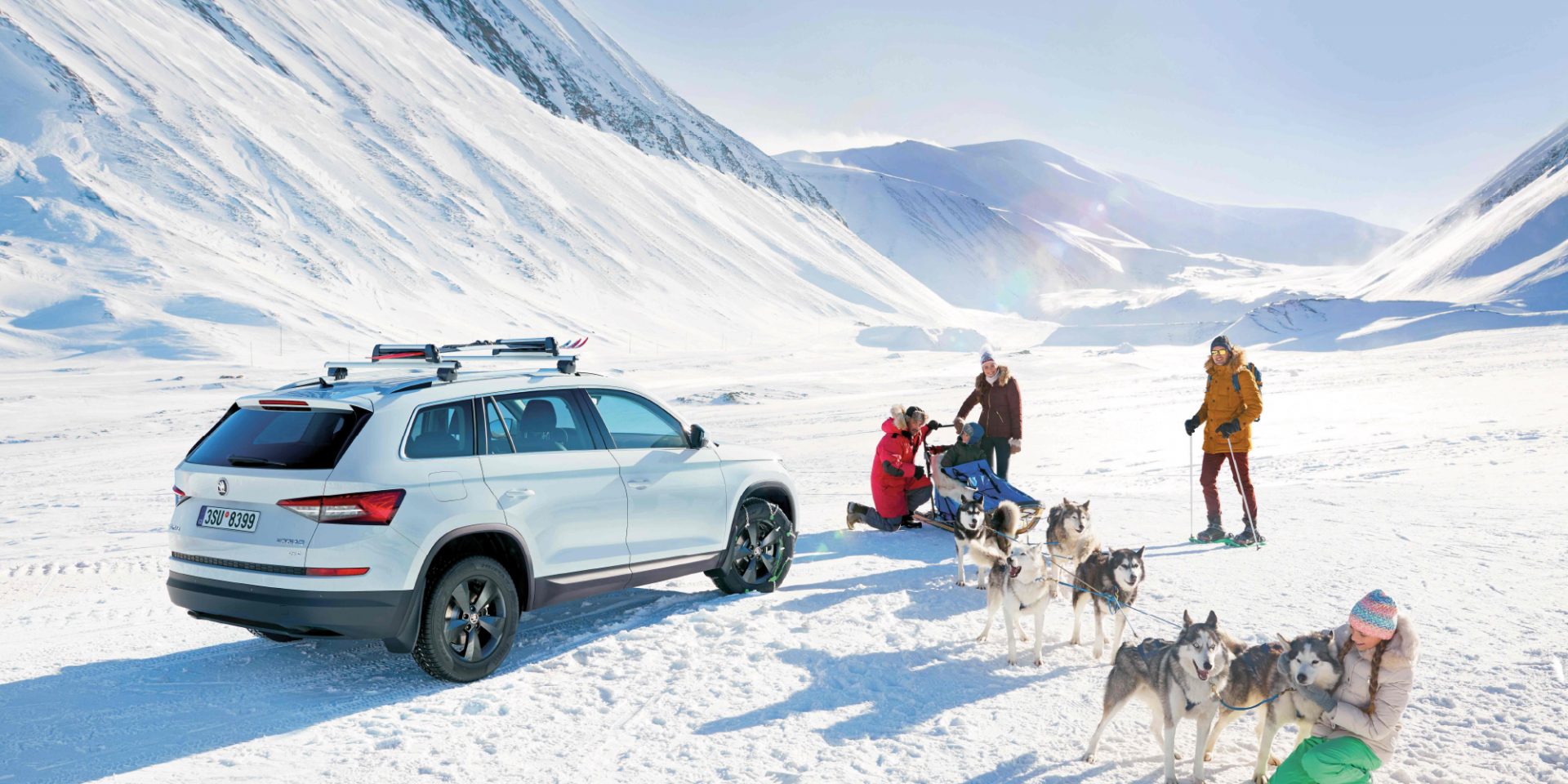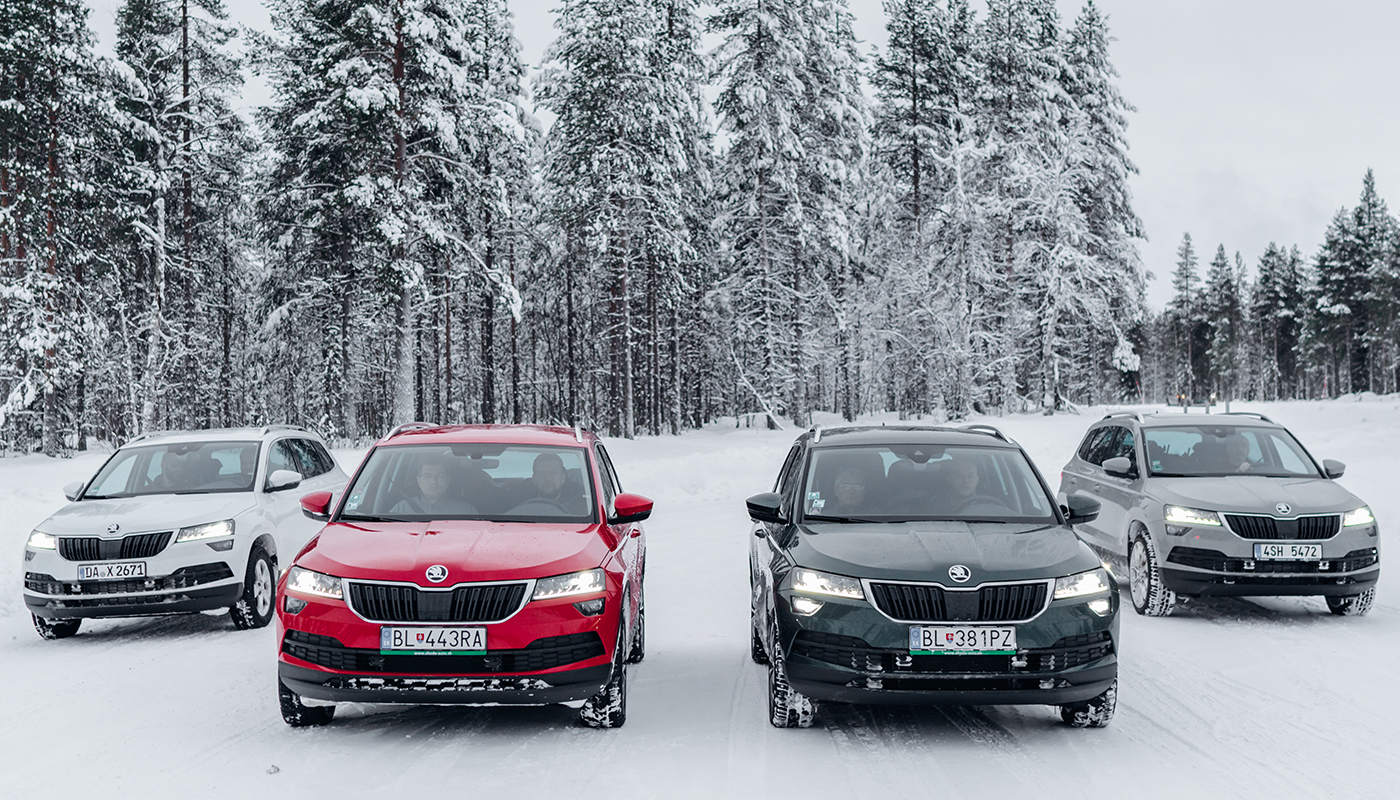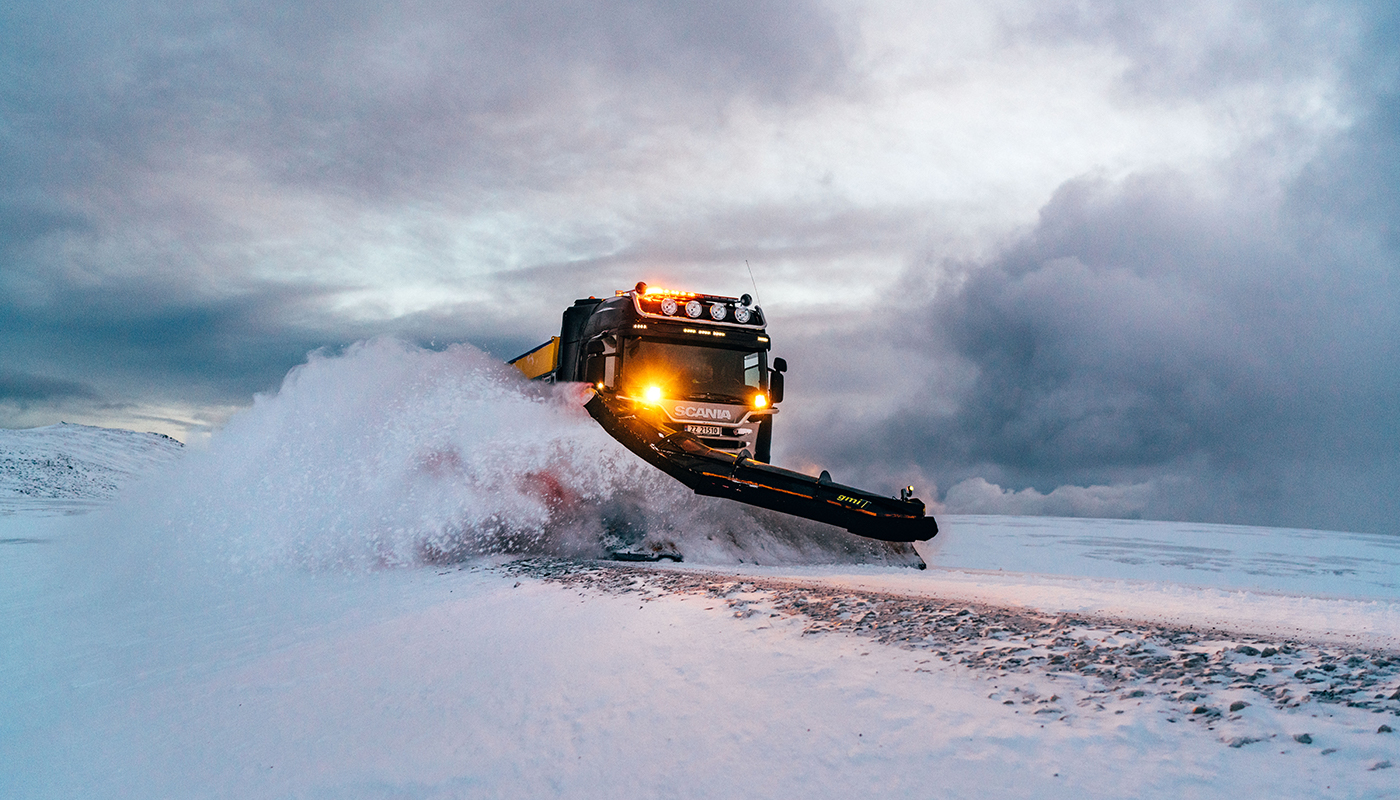Motoring to Winter Fun

Winter has its unmistakeable charm and brings a completely different type of relaxation than does your usual summer vacation. In our miniseries, we will offer you the most attractive destinations in seven European countries and provide some tips on how to prepare yourself and your car for the trip.
11. 12. 2017 Škoda WorldSnow-capped, majestic mountains, fluffy drifts of powdery snow sparkling in the sun, icicles extending from roofs, and windows adorned with icy etchings. Winter’s unmistakeable mood is enchanting, but it also is eager to crawl under your jacket and set your teeth chattering with chill. Most of all, perhaps, it likes to complicate life for drivers. Here it sprinkles the road with snow, there it lays down an icy patch, then it covers everything in a grey duskiness and adds some sleet for good measure.
So, whether you set off across Europe to ski in the Alps or just to the nearest hillside to sleigh and build snowmen, it’s good not to underestimate your preparations because winter roads can surprise you at any time.
That’s why we offer a number of useful tips and recommendations to help prevent troubles on the road. Let’s start with a checklist of the essentials you should take with you and a list of basic documents and information you mustn’t forget.
BEFORE YOU LEAVE
A QUICK CHECK CAN SAVE A LOT OF TROUBLE
Everything is packed, the children strapped in their seats, car doors slammed shut, and just as you’re ready to get going there comes that question: “Do we have everything?” Here we have a list that will help you with the answer.

REGISTRATION CARD
Presumably you wouldn’t forget it, but just to be sure you should check the validity date of the technical document.

INSURANCE AND GREEN CARD
It’s a good idea to have all documents for travel insurance in one place, and that includes the vehicle insurance (e.g. ŠKODA Insurance). You should definitely not forget the so-called ‘green card’, which serves as proof that your vehicle’s liability insurance is valid.

PAYMENT CARD, CASH, AND SMALL CHANGE IN COINS
When travelling in Europe, you will probably encounter stretches of toll roads and paid tunnels. That means it’s a good idea to have both a credit card and some cash on hand to get through the toll gates as quickly as possible. This can help to avoid the unnecessary stress of waiting in the queues that often form there.

PRINTED MAP
Be prepared for anything, even that your mobile phone decides not to cooperate. It certainly never hurts to have along an old-fashioned paper map showing at least the major roads.


AUTHORIZATION TO TRAVEL ABROAD
If you are not the direct owner of the car, which is the case not only for company cars but also for cars under operational leasing and hired cars, we recommend that you obtain an authorization to travel abroad (which should be notarized) from the vehicle operator. It should be at least in English. This will prevent potential problems.


MANDATORY WINTER EQUIPMENT
Even though the mandatory winter equipment differs in various European countries, it is good to start with the common standard equipment that will keep you out of trouble anywhere. The basic prerequisite for a trip to the mountains is of course winter tyres, denoted by the symbol of a snowflake in the outline of a mountain. They must have tread at minimum 4 mm deep, but you’ll be better off with 6 mm of tread or more (new tyres have up to 10 mm). Be forewarned! Starting from 1 January 2018, tyres marked only with the letters M+S (all-year, or off-road) are not sufficient for travelling across Germany. Snow chains in your boot should also be part of the standard equipment.
Before the trip, check your vehicle, and especially the battery. Tank up with only winter diesel fuel and keep sufficient fuel in reserve in case of an unexpected traffic jam or getting stuck. You should only transport skis on the roof or properly secured.


UPDATING MAPS
IN YOUR SATNAV
Both in the Czech Republic and elsewhere in Europe, road networks, street names, and even individual house numbers are always changing. Travelling with an old map may lead to a long and unnecessary detour, so it is a good idea to update your navigation data regularly. For ŠKODA vehicles you can do so easily at updateportal.skoda-auto.com.
After entering your car’s VIN code, the system automatically identifies which updates are necessary for your device and immediately makes them available to download. Online map updates are available for vehicles with MIB infotainment. For older vehicles, we recommend updating maps using the SD card available from any ŠKODA dealer.

HAVE YOU FORGOTTEN SOMETHING?
 |
TOW ROPE It takes up little space and weighs almost nothing, but it’s priceless when a need arises. It is a saviour whether it is you who is stuck and hoping for help or if you are rescuing someone else in a similarly unpleasant situation. |
 |
PROPERLY OPERATING WIPERS AND LIGHTS See and be seen – that is the basic rule of safe driving, and the demanding winter conditions (frequent rain and snow, dirt and salt on the road, and last but not least early dusk) will put your wipers and lights to the test. |
 |
CAR BATTERY IN PERFECT CONDITION The car battery takes a beating in winter. If it is not in good condition, one freezing night is enough to prevent you from starting in the morning. |
 |
SNOW CHAINS In winter, these are frequently mandatory even for four-wheel-drive vehicles (mainly in the Alps), so make sure you have them. Putting them on is easy if you practice in advance. Snow chains must be approved for the given tyre diameter. |
 |
NEXT SERVICE INSPECTION Check the date and mileage remaining before your next regular service inspection so you won’t have to worry about it while travelling. |
 |
ICE SCRAPER In winter, you will need this more frequently than you would wish to. Fortunately, ŠKODA drivers can find theirs inside the fuel tank lid. |
 |
EUROPEAN ACCIDENT STATEMENT FORM The official European accident statement form is not a part of the mandatory equipment, but having one will substantially facilitate potential discussions with insurance companies in the event of an accident. |
 |
“LAST RESORT PACK” It may sound a bit funny, carrying around in your car a folding shovel, blanket, thermos, chocolate bar, forehead lamp, winter work gloves, and even an extra pair of socks, but only until you really need them… |
 |
WINTER WINDSCREEN WASHER MIXTURE The anti-freezing mixture only prevents potential freezing of the washer systems when it is used undiluted in the windscreen washer reservoir. It works down to −25°C. |














